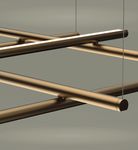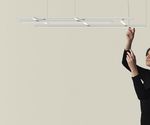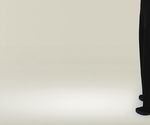336 Matteo Thun & Partners
←
→
Trascrizione del contenuto della pagina
Se il tuo browser non visualizza correttamente la pagina, ti preghiamo di leggere il contenuto della pagina quaggiù
336
Steven Holl
GRAPHO Forma, materia & luce
Steven Holl
Form, matter & light
La luce dei maestri
Piero Castiglioni
The light of the masters
Piero Castiglioni
Daan Roosegaarde
Poste Italiane spa – Sped.in A.P. – D.L. 353/2003 (conv. in L. 27.02.2004 n°46) art. 1,comma 1, LO/MI –ISSN 1828-0560
e Carlo d’Alesio
Tra luce e natura
Daan Roosegaarde
and Carlo d’Alesio
Between light
and nature
La nostra nuova soluzione per l’illuminazione
d’accento delle facciate, pensata per valorizzare
e disegnare con la luce gli scenari urbani notturni.
Anno / year 59 – n.336 2021
Sablé 100 noir Bianco RAL9003 Grigio RAL9006 Corten trimestrale / quarterly – € 15Installazione multipla verticale
di Hilow / Vertical installation
of multiple Hilow modules
¶ MAKING OF
Hilow:
disegnare la
semplicità
di / by Andrea Calatroni
P
roseguono i racconti di Making Of con
Panzeri e Matteo Thun, che disegnano un
leggerissimo sistema luminoso. “Come
nasce un prodotto?” “Chi lo progetta?” “Come
viene costruito?” Possono sembrare domande
ovvie agli addetti ai lavori, ma non lo sono
mai le risposte.
Panzeri e Matteo Thun disegnano il sistema
luminoso Hilow che, singolarmente o in
formazione, crea un tappeto luminoso a
soffitto o a parete: un’invenzione semplice ma
molto efficace. I tubi luminosi si incrociano
ortogonali creando una trama di luce diretta
e indiretta. Cinque estrusi su sei direzionano
MAKING
MAKI NG OF
OF / LUCE
LUCE 336 113Installazione presso Arena Listone
Giordano via Santa Sofia a Milano /
Installation at Arena Listone
Giordano via Santa Sofia, Milan
a destra / to the right
Installazione in ambito retail di
lusso / Luxury retail installation
inalterate le dimensioni e le configurazioni
illuminotecniche, cinque tubolari illuminano
la parete e uno la stanza. Per gli elementi
luminosi a parete Panzeri ha dotato
l’estruso, lungo 113 cm e Ø20 mm, di un
diffusore opalino, mentre per quello frontale
ha adottato lo schermo nero, evitando
fastidiosi abbagliamenti. A sospensione o
a parete questo prodotto è fatto di piccoli
particolari che evidenziano l’attenzione
al dettaglio che azienda e progettista
mettono nel loro lavoro quotidiano. Ne è
un esempio la sezione “sfettata”, che ha
sia una funzione pratica che una estetica.
Soluzione che permette l’alloggiamento
dello schermo planare, tecnicamente ed
economicamente più funzionale. A livello
estetico definisce e caratterizza Hilow dai
competitor, connotandolo in maniera decisa.
Terza configurazione disponibile per Hilow è
quella a plafone cui è fissato con una semplice
basetta quasi invisibile. Questa versione
è prioritariamente a luce diretta, solo un
elemento è indiretto a creare un suggestivo
alone a soffitto.
Tutte le versioni sono disponibili con
predisposizione per il protocollo DALI
Photo© Piero Simonetto
dimmerabile. A parete si evidenzia il diverso
attacco, leggermente più lungo ma che
non compromette l’estetica generale del
prodotto. In caso si scegliesse la versione
non dimmerabile la basetta si ridurrebbe in
dimensioni, rendendo l’apparecchio ancora
più aereo. Anche su questi dettagli Panzeri
lavora sull’essenziale, riducendo al minimo
le dimensioni, lasciando “parlare” l’oggetto
la luce verso il basso, il sesto verso l’alto o titanio. Anche il diffusore in policarbonato scultoreo.
viceversa. A questi si possono aggiungere fino è disponibile in più finiture: opalino e nero. Questo è il quarto prodotto sviluppato da
a due elementi verticali della serie To-Be Ø22 Quest’ultima versione è esteticamente più Matteo Thun con Panzeri: dopo Tubino, Firefly
mm, ideali per una luce d’accento sui piani raffinata, ma porta a un’importante riduzione in the sky e Venexia, anche Hilow è figlio
sottostanti. del flusso luminoso: dai 5.045 lm dell’opalino dell’approccio Zero Design che da sempre
Il modulo base di Hilow è composto da sei a 2.118 lm per il nero. Un dato che in fase di definisce la filosofia progettuale dell’architetto
estrusi in alluminio dalla riconoscibile sezione progettazione occorre tenere in considerazione. bolzanino. Zero Design non significa operare
tubolare “sfettata”: sul cilindro di partenza Questa ampia varietà permette di progettare entro un minimalismo fino a sé stesso ma,
è stata infatti creata una faccia piatta per combinazioni molto suggestive, come il al contrario, disegnare oggetti minimi ed
alloggiare il diffusore in policarbonato. raffinato tutto nero. La geometria e le finiture eleganti, nelle proporzioni e nelle finiture.
L’intersezione tra questi estrusi genera una definite da Thun hanno la giusta leggerezza Hilow, come abbiamo visto, è previsto in
griglia aperta asimmetrica, ideata per facilitare ed eleganza che fanno di Hilow la sorgente cinque finiture base, frutto della ricerca
le composizioni in serie lineari o su piani ideale per illuminare ambientazioni contract sulla materia che Panzeri persegue da molti
verticali sfalsati. Il giunto di unione tra i diversi quali hall, lounge bar o ristoranti. Questa anni. L’ottone o il titanio scelti per questo
elementi tubolari ha una doppia funzionalità: sospensione trova la sua corretta applicazione apparecchio raccontano il saper fare artigiano
di fissaggio e di configurazione. anche in ambientazioni domestiche, applicato all’industria, ed è questo che fa la
Attualmente è disponibile in cinque finiture: soprattutto nelle zone pranzo o living. differenza tra un prodotto massificato e uno
bianco, nero, bronzo, ottone satinato e Hilow in versione a parete mantiene progettato.
114 LUCE 336 / MAKING OFHilow: M aking Of continues with Panzeri and
Matteo Thun, who design a lightweight
lighting system. “How is a product born?”
Hilow’s basic module is made up of six
aluminium extrusions with a recognisable
“cut-out” tubular section, as a flat face has
designing “Who designs it?” “How is it made?” To
insiders, these may seem obvious questions,
been created on the cylinder to house the
polycarbonate diffuser. The intersection of
simplicity but the answers are not.
Panzeri and Matteo Thun designed the Hilow
these extrusions generates an asymmetrical
open grid, designed to make compositions in
linear series or on staggered vertical planes
lighting system, which, individually or in an easy. The joint between the different tubular
arrangement, creates a luminous carpet on the elements has a dual function, that is fixing
ceiling or the wall; indeed, it is a simple but very and configuration.
effective invention. The light tubes cross each It is currently available in five finishes: white,
other at right angles, creating a pattern of direct black, bronze, satin brass and titanium. The
and indirect lighting. Five out of six extrusions polycarbonate diffuser is also available in
direct the light downwards, the sixth upwards or more than one finishes: opal and black. The
vice versa. Up to two vertical elements from the latter version is aesthetically more refined, but
Ø22 mm To-Be series can be added to these, ideal leads to a significant reduction in luminous
for accent lighting on the surfaces below. flux: from 5,045 lm for the opal to 2,118 lm
MAKING OF / LUCE 336 115Hilow in versione a parete /
Hilow as wall-mounted version
sotto / below
Dettaglio della sezione tubolare "sfettata" che
alloggia il diffusore in policarbonato / Detail of
the "cut-out" tubular section housing the
polycarbonate diffuser
for the black. This is a fact that must be taken
into account during the design phase. This
wide variety allows you to design very striking
combinations such as the refined all-black
version. The geometry and finishes conceived by
Thun have just the right lightness and elegance
that make Hilow the ideal lighting fixture for
contract settings such as halls, lounge bars or
restaurants. This suspension lamp is also perfect
if you use it in domestic settings, especially in
the dining or the living areas.
The wall-mounted version of the Hilow
luminaire keeps the same dimensions and
lighting configurations – five tubes illuminate
the wall and one the room. For the wall-
mounted lighting elements, Panzeri equipped
the 113 cm long, Ø20 mm extruded elements
with an opal diffuser, with the exeption of
the frontal one, fitted with a black screen to
prevent annoying glare. Whether suspended
or wall-mounted, this product is made up
of small features that highlight the attention
to detail that the company and the designer
put into their daily work. An example of this
is the “cut-out” section, which has both a
practical and aesthetic function. It is a solution
that allows the housing of the planar screen,
which is technically and economically more
functional. On an aesthetic level, it defines and
characterises Hilow from its competitors, giving
it a strong identity. The third configuration
available for Hilow is the ceiling version,
to which it is fixed with a simple, almost
invisible base. This version is primarily for
direct lighting, with only one indirect element
creating an eye-catching halo on the ceiling.
All versions are available ready for the
dimmable DALI protocol. On the wall, the
different wall mount is noticeable as it is
slightly longer, but it does not compromise the
overall aesthetics of the product. If you choose
the non-dimmable version, the base would
be smaller, making the luminaire even more
airy. On these details too, Panzeri is working
on the essentials, reducing the dimensions to
a minimum and letting the sculptural object
“speak” by itself.
This is the fourth product that Matteo Thun
has developed with Panzeri: like Tubino, Firefly
in the sky and Venexia. also Hilow is a child
of the Zero Design approach that has always
characterised the design philosophy of the
architect from Bolzano. Zero Design does not
mean operating within minimalism for its own
sake, but, on the contrary, it means designing
through proportions and finishes minimal
and elegant objects. Hilow, as we have seen,
is available in five basic finishes, the result of
the research into materials that Panzeri has
been pursuing for many years. The brass or
titanium chosen for this fixture tells the story
of craftsmanship applied to industry, and this
is what makes the difference between a mass-
produced product and a designed one.
116 LUCE 336 / MAKING OFPuoi anche leggere



























































